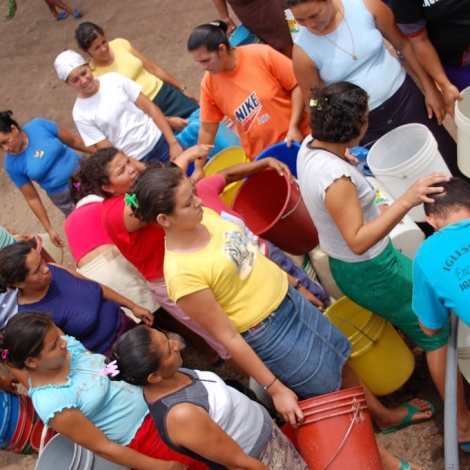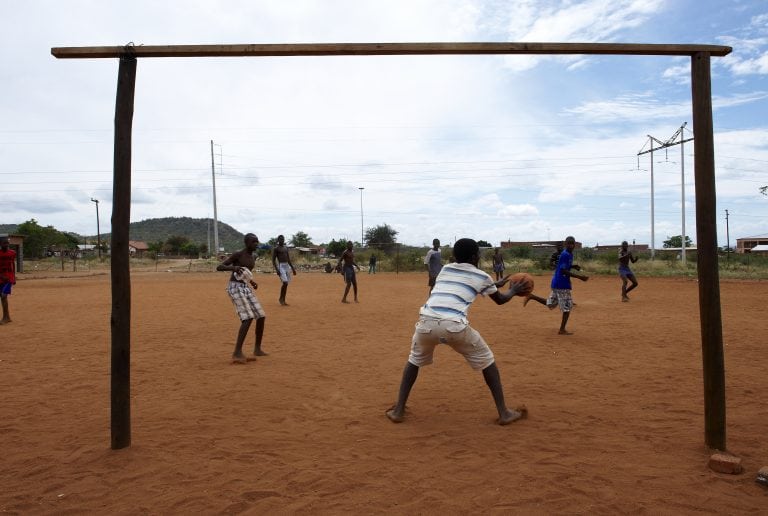Earthquakes. Hurricanes. Tsunamis. Floods. Landslides. These kinds of disasters hit developing countries hardest and the people affected often lose everything. That includes their homes, water sources, water containers, and toilets.
When effectively implemented, water, sanitation, and hygiene interventions can prevent or lessen the impact of disease outbreaks. However, several post-emergency evaluations show that to maintain positive impacts, aid organizations should think about how to ensure the sustainability of water and sanitation services as well as hygiene behaviors after the response is “finished.”
“Infrastructure interventions lasted longer than hygiene education. Water systems and latrines provided sustainable services while improved handwashing behavior declined.”
Below, I’ll highlight challenges and lessons learned from addressing a major emergency of the not-so-distant past – Hurricane Mitch. Mitch was the Western Hemisphere’s deadliest hurricane in the last 200 years. It made landfall in Honduras on October 29, 1998, and for six days the storm poured 75 inches of rain onto Central America. Floods killed at least 11,000 people in Guatemala, Honduras and Nicaragua and displaced more than 3 million.
Successes and failures of the response to Mitch
We are fortunate to have access to a series of sustainability evaluations of the American Red Cross (ARC) water and sanitation responses to Hurricane Mitch. The ARC program provided water and sanitation hardware and a hygiene education program, which included training for local health educators.
The US Centers for Disease Control and Prevention (CDC) did evaluations of ARC’s work in 2002, 2006, and 2009 by looking at sample communities in four countries: El Salvador, Guatemala, Honduras, and Nicaragua. This allowed them to look at how things improved or deteriorated over time.
The water systems were managed by communities. In general, water systems and latrines provided sustainable services. However, some communities were experiencing major problems with infrastructure. Seasonal lack of water continued to be a problem across the region (CDC, 2010).
While 77 percent of the inspected latrines were considered to be hygienic and in use, several were reaching their maximum capacity or could no longer be used (CDC, 2010). Homes built after the ARC program had made their own open pit latrines, which filled with water and overflowed during the rainy season. In some communities, residents practiced open defecation. There were not enough latrines for large families and many latrines were used improperly (CDC 2010).
“Rather than just installing infrastructure, form and train a local administration to operate it.”
Physical infrastructure interventions were generally more sustainable than hygiene behavior interventions. The ARC provided hygiene messaging throughout the original program until 2002. However, improved handwashing behavior declined in 2006 and remained about the same in 2009.
The following recommendations are based on those the CDC made for anyone implementing water and sanitation projects in both emergency response and development situations (CDC 2002; CDC 2008, CDC 2010). Many of them are similar to development principles.
Hygiene behaviors
- Provide strong community-wide hygiene education programs before, during, and after physical water and sanitation interventions.
- Work with Ministries of Health or Water and local non-governmental organizations to provide continued support for ongoing water services monitoring and hygiene promotion.
Water systems
- Rather than just installing infrastructure, form, train, and provide ongoing support to local administrative structures (like water committees) to operate water and sanitation infrastructure.
- Just as many non-emergency water interventions are finding, communities would benefit from follow-up from authorities or organizations with water and sanitation skills for problem solving and help on how to seek support (financial, materials, technical assistance) for maintaining systems.
- Site selection and project designs should consider local demographic trends and employment opportunities, seasonal changes (dry vs. rainy seasons) and water source capacity.
- Understand costs to estimate a water fee that will allow sustainable operation and expansion of water systems
Sanitation
- Provide guidance to each household on what to do when the latrine pit is full.
- Monitoring should include hygienic use as an indicator, not just access.
Many of the CDC recommendations involve following up, which is not typically built in to emergency response. Perhaps it should be. Evaluations after more recent emergencies echo the challenges to WASH implementation posed by emergency situations and recommend similar ways forward (see resources below). CDC recognized that these activities will require aid organizations to invest in qualified personnel, probably at the country level. Another option is to partner with local government or development organizations to provide follow up. In summary, aid organizations can and should build in sustainability from the start by learning from past efforts.
References
Centers for Disease Control and Prevention. 2002. Evaluation of the health impact of the American Red Cross-sponsored water and sanitation infrastructure reconstruction programs in communities affected by Hurricane Mitch: Honduras, Nicaragua, El Salvador, and Guatemala – February 2002 [PDF – 98 pages]. Atlanta: U.S. Department of Health and Human Services.
Centers for Disease Control and Prevention. 2008. Evaluation of the sustainability of water and sanitation interventions in Central America after Hurricane Mitch, February 12 – 27, 2006 [PDF – 77 pages]. Atlanta: U.S. Department of Health and Human Services.
Centers for Disease Control and Prevention. 2010. Evaluation of the sustainability of water and sanitation interventions in Central America after Hurricane Mitch, February 14 – March 5, 2009 [PDF – 78 pages]. Atlanta: U.S. Department of Health and Human Services.
Resources for WASH in Emergencies
Sphere Handbook: Minimum Standards in Water Supply, Sanitation and Hygiene Promotion. WASH chapter | Complete handbook
WHO Technical Notes for Emergencies, 2013 (WEDC. Full text)
Emergency water sources: Guidelines for selection and treatment (WEDC)
Emergency sanitation: Assessment and programme design (WEDC)
WASHPlus Focus on WASH in Emergencies: 2013 | 2012
WASHPlus Focus on Cholera Prevention & Control: 2013 | 2012 | 2011

